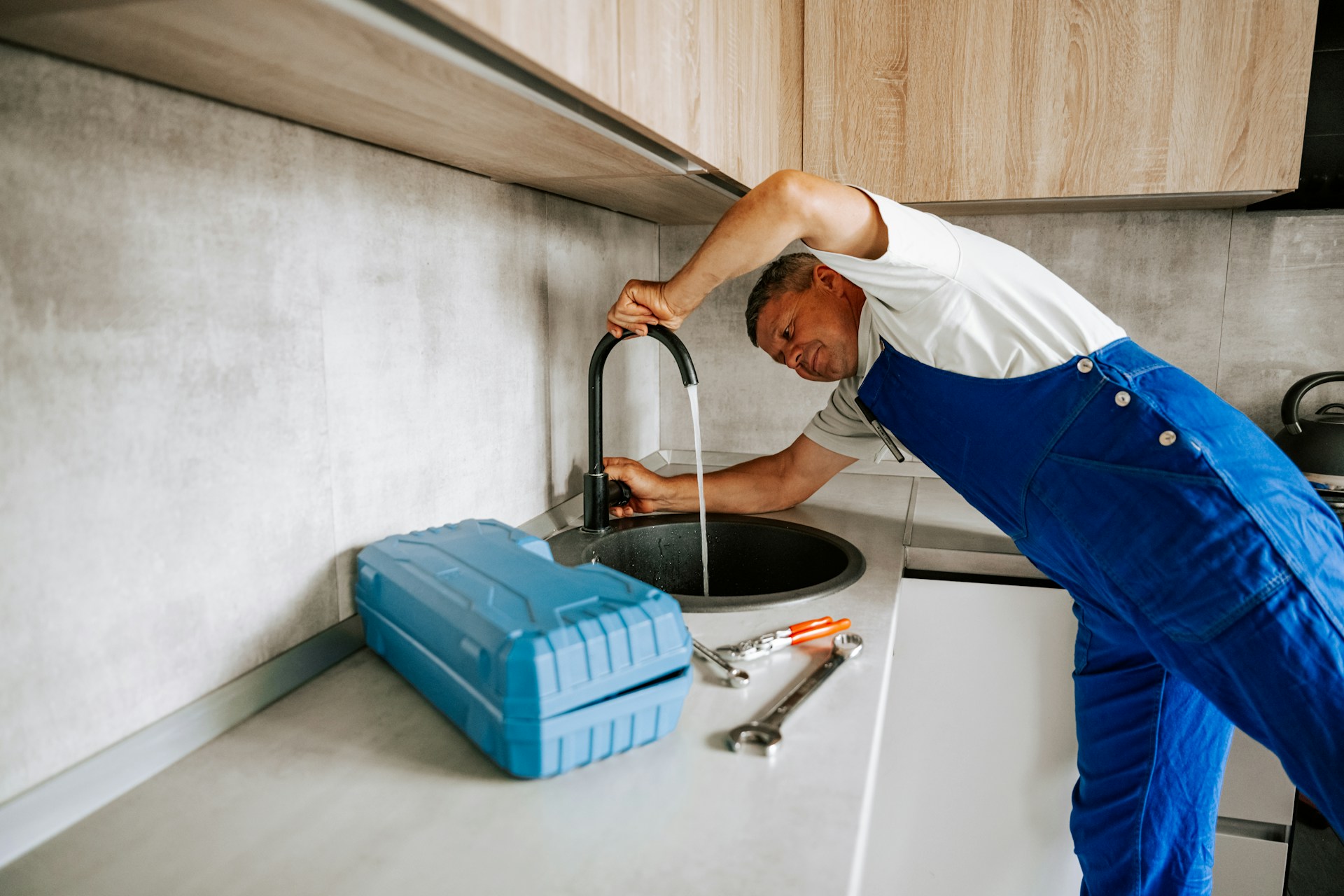Recurring clogged drains in homes around Tomball can be more than just an occasional inconvenience. When the same drain backs up again and again, it creates stress and disrupts daily routines like cooking, washing hands, or showering. For families with a packed schedule, even a single blocked sink can throw an entire day off course.
These repeat clogs often signal that the problem runs deeper than just surface-level debris. Whether it’s something going down the drain that shouldn’t, a plumbing issue behind the walls, or a condition affecting your water quality, getting to the root of the issue is the best way to break the cycle. The good news is that many of these causes are preventable once you know what to watch for.
Common Household Items Causing Drain Blockages
Many homeowners in Tomball aren’t aware that some of the most common clog triggers come straight from everyday household routines. These are items that are often poured or flushed without a second thought, but once they build up inside the pipes, they start to slow water flow or stop it completely.
Here are a few household materials that often cause problems:
– Grease and oil: These cool and solidify inside the pipes, forming a sticky lining that traps other debris. Even small amounts left from cooking can lead to slow drains over time.
– Coffee grounds: They don’t break down in water and often clump together, building dense blockages once mixed with grease or soap residue.
– Hair: Long strands and even small amounts of loose hair can catch on rough pipe edges, mesh with soap, and start forming a tangled clog.
– Soap scum: Over time, bar soap interacts with minerals in water to leave a thick residue inside pipes. This sticky film catches debris and contributes to clogs in bathroom sinks and showers.
– Flushable wipes and cotton products: Even those labeled flushable don’t break down as easily as toilet paper. They build up, especially in older or narrower waste lines.
Using sink strainers in kitchen and bathroom drains is one way to stop the bulk of solid waste from going down the pipes. But changing disposal habits matters too. For example, wiping greasy pans with a paper towel before rinsing them in the sink can limit the amount of oil that ends up flushing through the system. Making these small shifts can help cut down on the kinds of waste that lead to recurring problems.
Plumbing Design Problems Inside the Home
Not all clogged drains in Tomball are due to what gets poured or flushed. Sometimes, the problem lies within the home’s own plumbing system. Certain design flaws or aging installations can lead to poor drainage, even when homeowners are careful about what goes down the lines.
Poor slope in the drain pipes is one issue. If the pipes don’t have enough angle, gravity doesn’t work in your favor. Wastewater can begin to collect instead of flow out efficiently. Over time, this standing water allows residue to dry and stick to pipe walls, which narrows the opening and slows everything further. Eventually, a complete blockage forms. This sort of plumbing misalignment is more common in older homes with outdated systems, but it can happen anywhere if the layout wasn’t done correctly.
Another concern is pipe size. Smaller drain lines provide less room for waste and water to flow, making them more prone to clogs. In some homes, especially ones built before modern plumbing codes were widely followed, pipes may also have more sharp turns or long flat stretches that don’t allow for full drainage. These types of layouts tend to collect solids in specific spots and form repeated clogs in the same areas.
Frequent backups in locations like kitchen sinks, bathroom showers, or utility rooms should prompt a closer inspection of the plumbing network. Proper camera checks allow our technicians to see what’s happening behind the walls and underground. If the cause is pipe width or slope rather than user habits, making adjustments where possible can lower the chances of future issues.
Structural plumbing issues aren’t something that homeowners can detect or correct without the right equipment and experience. But recognizing the signs like slow drains in multiple rooms or needing to snake the same line again and again is the first step toward a permanent solution.
Tree Roots Can Clog Outdoor Drains
In Tomball neighborhoods with established trees and older sewer lines, tree root intrusion is a common cause of recurring drain backups. Roots naturally grow toward moisture, and over time, they find tiny cracks or gaps in underground pipes. Once inside, they expand and start catching grease, paper, and waste, which eventually creates blockages.
The symptoms often show up as slow drainage across multiple fixtures, especially in the lower parts of the home. Gurgling sounds from toilets or tubs can also be a sign. Another red flag is repeated clogs that seem to clear up only temporarily after snaking. These roots grow back if the source isn’t dealt with properly, so you might feel like you’re on a never-ending loop of backups.
Unlike issues with hair or grease, root problems are not typically fixable with basic household tools. Identifying them accurately requires visual confirmation, usually done through a sewer camera inspection. Once located, the roots may need to be cut out, and damaged sections of pipe might need to be replaced to stop them from coming back.
Hard Water Damage Inside the Pipes
Tomball is known for having harder water in many areas, which means water contains a higher amount of minerals like calcium and magnesium. These minerals leave behind residue as they pass through pipes and begin to build up over time. This buildup narrows the opening inside drains and traps debris more easily, leading to frequent, slow-forming clogs.
You may notice white scale forming around faucets or showerheads, which is a good indicator of what’s also happening inside your pipes. As the minerals settle, they accumulate layer by layer, especially in drains that already have slower flow or older materials. Pair a small pipe size with hard water buildup, and you have a recipe for repeat issues.
If mineral scaling is part of your clog problem, you might begin to see slower drainage rather than sudden blockages. You’ll also likely experience a drop in water pressure or hear sputtering sounds. Most homeowners don’t realize this is the issue until it’s advanced, so keeping track of these early signs can help avoid expensive repairs later.
There are ways to reduce the effects of hard water, including using water softeners or descaling treatments. Regular inspections and professional cleaning can help remove deposits before they get thick enough to cause clogs that shut down entire sections of your system.
Why Maintenance Helps Break the Cycle
Waiting until a drain fully clogs before taking action might seem like a time-saver in the moment, but it usually works out the other way. Blockages that keep returning often have deeper causes that routine treatments don’t fully address. That’s where maintenance comes in. Regular checks and cleanings help stop small problems from growing into bigger, costlier ones.
A residential plumbing maintenance appointment usually includes more than just a basic snake or plunge. It looks at the overall flow, inspects pipe quality, and checks drain speeds in different areas of the house. These visits also help catch the early buildup of residue, scaling, or root growth where it starts, not after it causes damage. Ongoing drain care cuts the risk of needing emergency help down the line.
Here’s how maintenance efforts reduce the chance of a recurring clogged drain in Tomball:
- Removes early buildup before it hardens into a blockage
- Helps detect structural pipe flaws before major failures
- Keeps tree roots from regrowing into pipes by using scheduled treatments
- Catches items stuck deep in the drain before they can cause backups
- Allows adjustments for water pressure or treatment if hard water is causing mineral buildup
Staying ahead of the issues means fewer surprise interruptions and less stress. It also adds years to your plumbing system by keeping drains clear and flowing.
Keeping Your Drains Clear in Tomball
Recurring drain clogs are frustrating because they return even when you think the problem is gone. That repeated cycle often comes down to causes you can’t see like tree roots, mineral deposits, or poorly designed plumbing. Each of these issues grows quietly over time and leads to repeated disruptions if left unchecked.
By understanding these hidden causes, you’re in a better position to protect your home. Shifting disposal habits, addressing any known design flaws, and staying on top of maintenance are practical ways to break the pattern. Homes in Tomball can avoid most drain clog issues with a proactive routine that tackles both daily behaviors and longer-term plumbing care.
Your home’s drainage system wasn’t made to fight buildup, poor design, or natural intrusion without help. But with the right combination of awareness and routine support, you won’t find yourself returning to the same clogged sink or drain month after month.
If recurring drain clogs are disrupting your day and you need a lasting solution, consider taking proactive steps to address underlying issues like tree roots or mineral buildup. Our professionals at Tradition Services understand that even small problems can lead to major disruptions if left unchecked. For expert help with a clogged drain in Tomballand a thorough inspection of your home’s plumbing, please contact us todayto schedule service and get a quick estimate.

